News

July 20, 2010
A team of scientists at Berkeley Lab's Environmental Energy Technologies Division, and their private-sector partners (DuPont, Bosch, 3M, and Proton Energy), have been awarded more than $1.5 million from ARPA-E to research a novel flow battery system for storing energy on the electric grid. The Berkeley Lab researchers are Venkat Srinivasan, Vince Battaglia, and Adam Weber of EETD.EETD is also a...
Read more
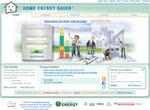
July 16, 2010
Berkeley Lab scientists Evan Mills and Rich Brown developed the Home Energy Saver (hes.lbl.gov or HomeEnergySaver.lbl.gov), a free online tool that helps consumers identify the best, most cost-effective ways to save energy and reduce greenhouse gas emissions from their homes. A powerful building energy simulation program is at the core of HES, providing each user with a customized home energy...
Read more

May 27, 2010
The marketplace for Smart Grid technology products is expanding thanks in part to an open-source communications specification developed by Lawrence Berkeley National Laboratory (Berkeley Lab) and its research partners....
Read more

April 8, 2010
As part of an ongoing effort to reduce energy use in new and existing commercial buildings by the U.S. Department of Energy (DOE), commercial building owners, operators, and technical experts can join DOE's Commercial Building Partnerships (CBP) initiative. Three DOE national laboratories—the Lawrence Berkeley National Laboratory (LBNL), the National Renewable Energy Laboratory (NREL), and the...
Read more
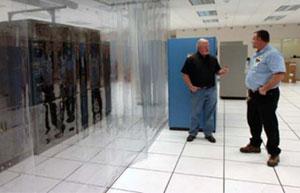
December 21, 2009
A project to improve the energy efficiency of the State of California Franchise Tax Board's data center has won a "Best of California" Award from the Center for Digital Government. Geoffrey Bell, Energy Engineer at Lawrence Berkeley National Laboratory's Environmental Energy Technologies Division, led the project team.The research was funded by the California Energy Commission's Public Interest...
Read more
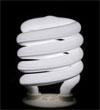
December 17, 2009
Research by Robert Clear, Francis Rubinstein and Jack Howells of the Environmental Energy Technologies Division suggests that the exposure to mercury in a broken CFL is minimal—equivalent to one bite of albacore tuna—and simple commonsense measures such as opening a window after the breakage and during clean-up are enough to protect room occupants....
Read more

November 18, 2009
Scientists at the Department of Energy's Lawrence Berkeley National Laboratory, in cooperation with the International SEMATECH Manufacturing Initiative (ISMI), are releasing for beta testing a computer-based tool to help the world's semiconductor manufacturing facilities ("fabs") evaluate and improve their energy efficiency."We developed FABS21 to allow the operators of semiconductor manufacturing...
Read more

October 20, 2009
Berkeley Lab researchers, in partnership with Silicon Valley firms and the California Energy Commission, have three new energy-efficient data center technologies available for demonstration....
Read more
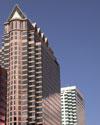
September 23, 2009
Advanced energy-efficient technologies in lighting, HVAC (heating, ventilation and air conditioning), and control systems are heading for the buildings, laboratories and data centers of several federal agencies. With $1.8 million in funding from the American Recovery and Reinvestment Act, experts at the U.S. Department of Energy's Lawrence Berkeley National Laboratory (Berkeley Lab) will provide...
Read more

September 21, 2009
This San Francisco Chronicle article discusses our R&D on building commissioning, and how it can save a commercial building owner millions of dollars in energy costs....
Read more
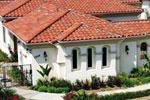
December 16, 2008
Hashem Akbari and Surabi Menon, scientists at the U.S. Department of Energy's Lawrence Berkeley National Laboratory (Berkeley Lab), and Art Rosenfeld, California Energy Commissioner, Professor Emeritus at the University of California, Berkeley, and former Berkeley Lab scientist, have proposed a "Cool World" plan that would use white roofs, and solar-reflective roofs of other colors, to reduce...
Read more
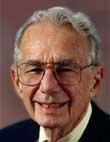
October 22, 2008
The Economist magazine has named California Energy Commissioner Art Rosenfeld recipient of one of this year's Innovation Awards. The weekly British magazine awards Innovation awards in several areas; Rosenfeld won the award in the "Energy and the Environment" sector. A former Berkeley Lab scientist, Rosenfeld was director of the Center for Building Science (Environmental Energy Technologies...
Read more
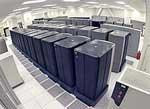
October 15, 2008
Data centers are the unseen workhorses of the global economy. Their numbers have grown rapidly along with their energy use. Now, the government and the information technology industry are cooperating to develop solutions to the rapid rise in data center energy consumption. This article in the U.S. Department of Energy's Conservation Update covers research and program efforts to increase the energy...
Read more
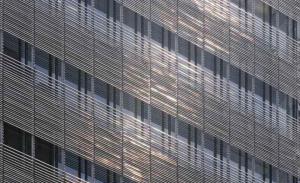
October 18, 2007
Employees of The New York Times Company (The Times) began occupying their new headquarters on the west side of Manhattan in mid-2007. Three years before this milestone, The Times's facility team had approached building scientists at Berkeley Lab's Environmental Energy Technologies Division (EETD), looking for help. They were searching for reliable and affordable technologies, not yet available in...
Read more
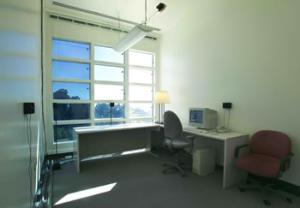
January 5, 2007
To help EC windows realize their potential to save energy in California and throughout the U.S., DOE and the California Energy Commission funded Berkeley Lab's Environmental Energy Technologies Division to conduct a three-year field test of EC windows in a realistic office-building setting. This test, along with other tests and computer simulations, was intended to allow the Berkeley Lab...
Read more

July 7, 2004
A unique new type of energy-saving window material developed by scientists at the Environmental Energy Technologies Division of Berkeley Lab has been recognized with a 2004 R&D 100 Award. Given by R&D Magazine, the awards have been called "the Oscars of technology." The addition of this winner, and an R&D 100 award won by another Lab division (Materials Sciences for their work on...
Read more
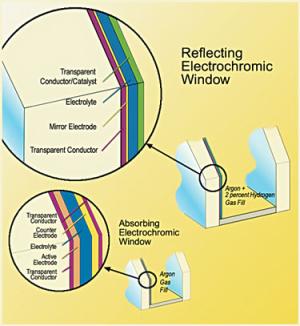
April 20, 2004
The race is on to develop the next generation of energy-efficient windows, and it has a new entrant: transition-metal switchable mirrors (TMSMs). TMSMs are glass panels with a coating capable of switching back and forth between a transparent state and a reflective one....
Read more
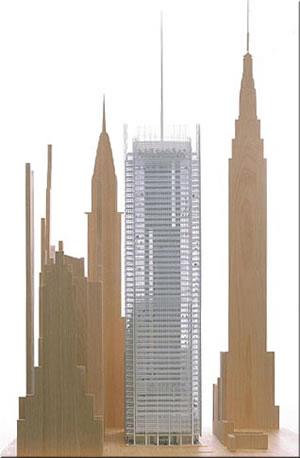
February 18, 2004
The New York Times Company and Berkeley Lab's EETD have begun a cooperative research project to test new technologies to increase the energy-efficiency of the new building and to improve the indoor environment for the comfort of its occupants....
Read more
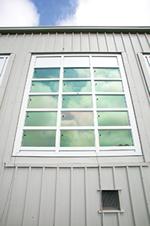
September 17, 2003
The Advanced Window Systems Test Facility was built to test new window technology that will increase energy savings and occupant comfort....
Read more